Explore a Few Real Uses of Blockchain Technology
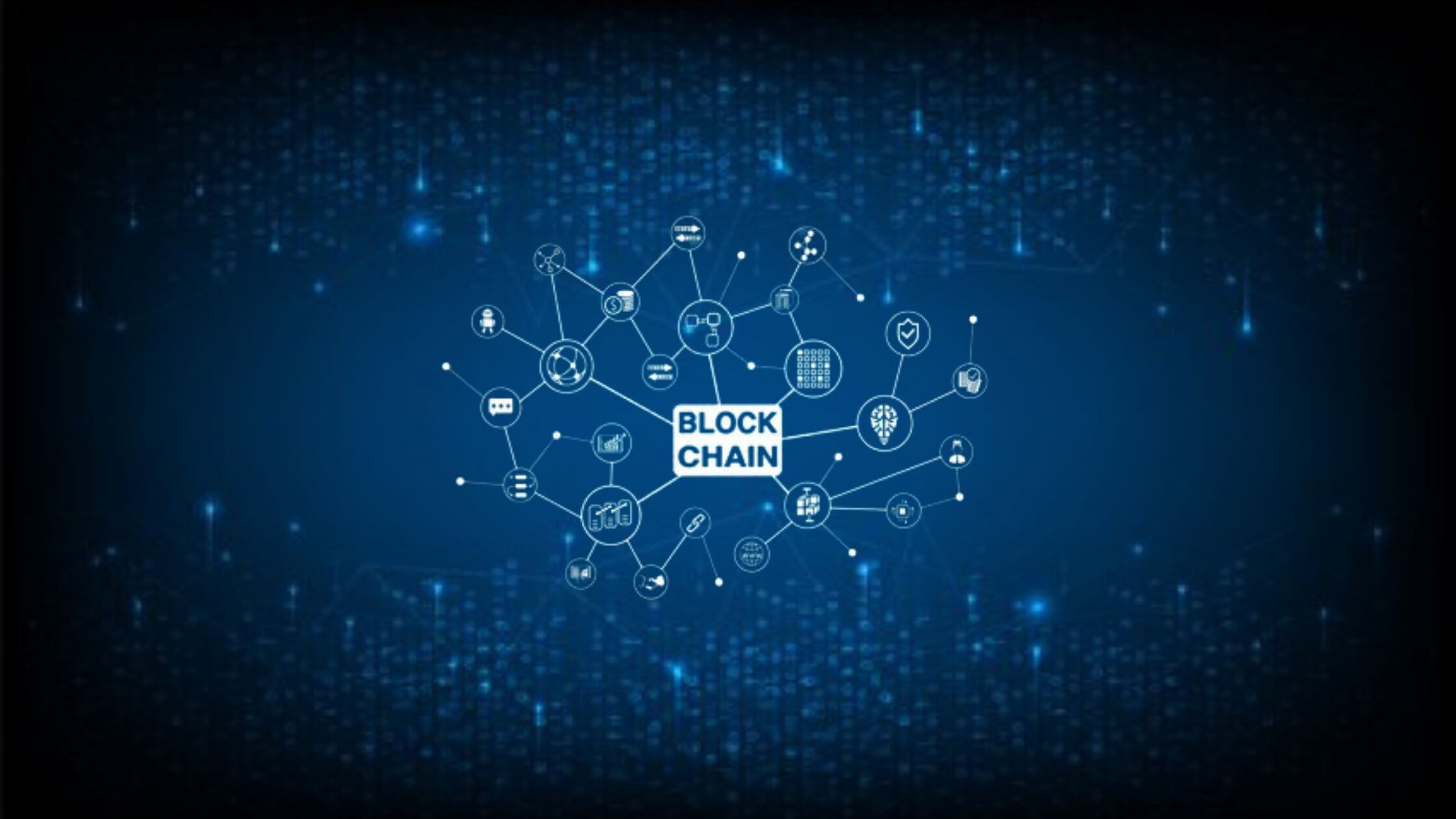
The term blockchain is often misinterpreted as a single-use for cryptocurrency and bitcoin transactions. However, the application has not been limited to these two and has numerous other uses in diverse sectors. This article will look into a few real uses of blockchain and how it can revolutionize technology benefiting different industries to enhance their work.
An Overview Of The Blockchain Technology
A blockchain is a type of a database that collects information or stores transactional records in groups or in other words “blocks”. When these storage capacities fill, they are chained into the previously filled block, forming a “chain”. With its most prominent usage in cryptocurrencies, the storage is often called a digital ledger. This information stored here is highly secured, and each transaction is authorized by a digital signature authenticating the transactions. The following characteristics of blockchain technology have made it immensely popular over time, diversifying and multiplying its uses.
Decentralized system : Unlike the conventional methods, blockchain transaction takes place in mutual
agreement of users.
High Security : The digital signature feature has made fraud transactions and data corruption
impossible.
Automation Capability: The technology is programmable and can generate automatic system actions, events,
and payments.
Uses of Blockchain Technology In Different Industries
Applications in Financial Services
Embracing the blockchain industry in the financial sector has enabled us to lower the expensive mistakes that come with human errors, operational risks and streamline each process. The blockchain applications in financial trade allow recordkeeping, onboarding, security, privacy, data management, and trade processing secured and efficient. Features such as digital document authentication enable real-time verifications and collation of user activities. The tracking and enforcement of regulatory controls facilitate the collateralization of assets. Digitizing the lifecycle of finance with blockchain applications can enhance the overall security and efficiency of every subsidiary process.
User Identification Process / Digital Identity
The need for companies to comply with Know Your Customer (KYC) policies has become crucial over time. The guidelines enable financial sectors to manage risks prudently and prevent activities like money laundering. In order to meet user identification standards, blockchain can facilitate a standardized network of identification information. The data can be stored and accessed securely and validated in record time. The digital identity applications through blockchain can be used in many sectors, including finance, health, education, travel, etc.
Blockchain-Based Cloud Storage
Cloud storages have numerous advantages, which include usability, easy access, automation, cost-efficiency, synchronization, convenience, etc. However, some may find cloud computing problematic with the risk of cyber-attacks. Integrating cloud storage with blockchain can carry off the problem with its extremely secured segments. The data of blockchain-based cloud storage is divided into many encrypted segments and are interlinked through a hashing function. The decentralized locations and security provisions assure reliable and robust security against hackers. Further, they do not hold the data on a node and hence help owners to retain their privacy.
Smart Contracts
With an objective of reduced intermediates, fraud losses, enforcement costs, arbitrations and other accidental exceptions, smart contracts are used to execute and control agreements. These contracts include legally relevant events and actions with the terms between the buyer and seller written into lines of code. The smart contracts are available as a computer program or a transaction protocol, and the codes control the execution while making traceable, transparent, and irreversible transactions. The self-executing contracts permit trusted contactors and transactions even among anonymous parties without the requirement of a centrally authorized legal system.
Blockchain For Logistics
Blockchain solutions for the logistics industry can provide extra transparency and clarity to all of its stakeholders. The applications can allow documentation and recording in a digital platform, making it incorruptible. The important paperwork can be stored in the form of digital copies and used for updates in the future. It can further track the financial transactions, record them, make POs, custom duties, and other work easy. Record of temperature zone is another key feature of blockchain for cold storage supply chain operations. This helps in improving safety movements and reducing disease spreading. Serial numbers, bar codes, RFID tags, and products are a few hardware tools that can be digitally linked with a blockchain tracking software.
Apart from these, blockchain is used in IoT, voting mechanisms, real estate, royalty tracking, and many other related industries. The improved security system using cryptography has enabled blockchain to mark its territory in many sectors.
If you are looking forward to using blockchain in your organization and strengthening your business’s core system, contact us at Fidenz Technologies for ultimate solutions. Our team of professionals is happy to help with all your software concerns.
DevOps Pillars: The Essential Strategies That Strengthen The Development Process
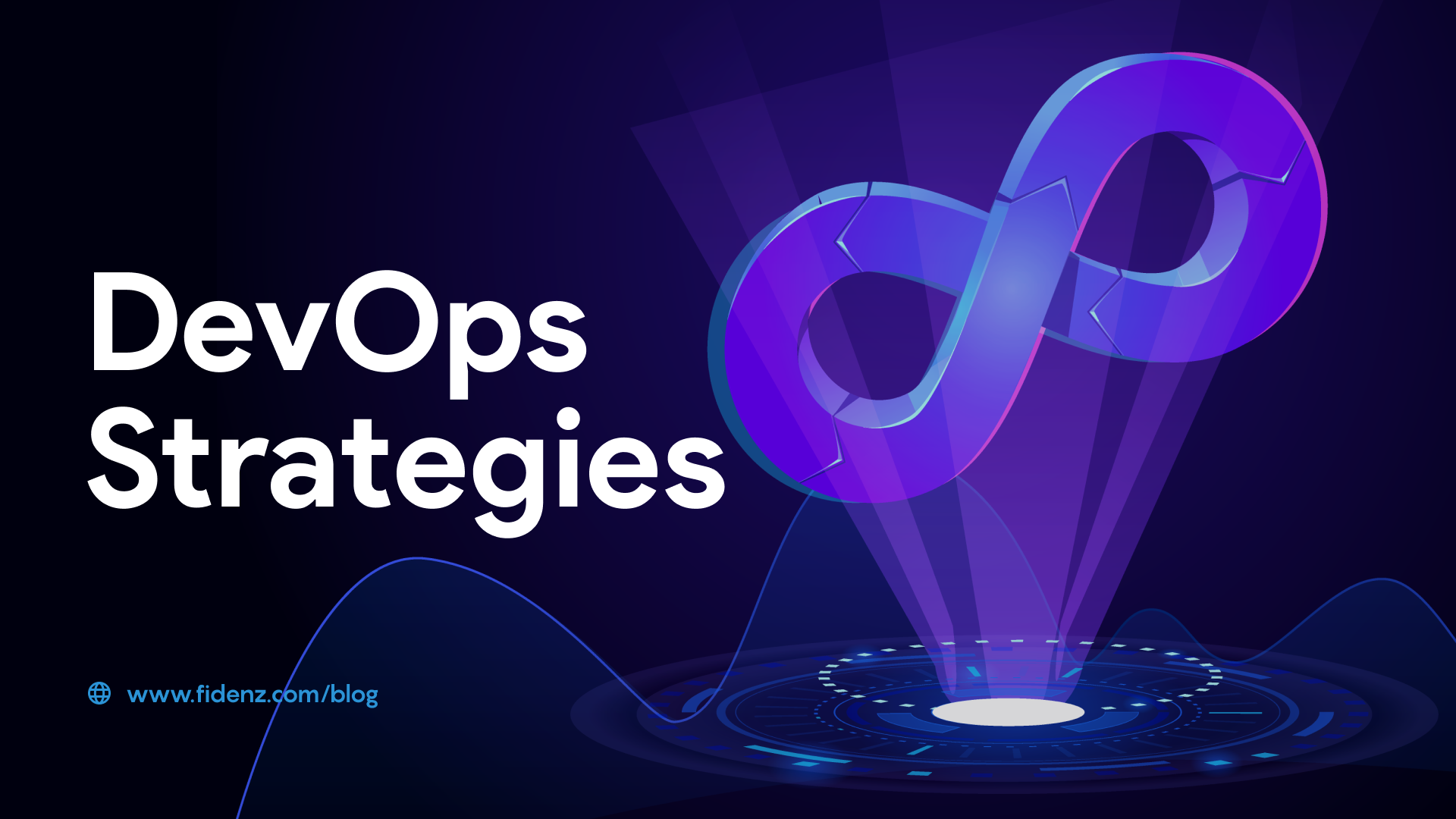
DevOps Pillars: The Essential Strategies That Strengthen The Development Process
Software Development (Dev) and information technology operations (Ops) have drawn together DevOps, helping the entire software development process from designs to production support. DevOps methodologies help fasten the development process, QA, and deployment where the companies can launch their products faster to the market.
A shorter development cycle, environment stabilization, reduced defects, and increased release velocity are some of the key benefits of using DevOps. This article briefly discusses the solid pillars of DevOps that help to accelerate businesses and software companies to be efficient and agile, creating applications of DevOps speed and scale.
Leadership and Planning
Leaders can empower organizations with a long-term vision and innovative ideas while stimulating the team with inspirational communication and encouragement. They can also identify the unique skills of individuals and assign tasks accordingly. Therefore, it is essential to have a great lead in bringing the best out of the developer team.
Planning is another major component that can strengthen the entire DevOps process. Apart from the standard project planning, it is crucial to establish a strong collaboration between the business and the team. Once the KPIs are decided, it is essential to implement them around software architectures, languages and other frameworks.
Collaboration
A culture enriched with joint effort enables multi-functional engagements and shared responsibilities avoiding silos between Dev, Ops, and QA. Collaborating tools such as Slack, Yammer, and Chanty help the teams to communicate and cooperate between departments. In addition, the collaborative culture enables the teams to monitor the established Key Performance Indicators (KPIs) and ensure each phase runs smoothly throughout the process.
Tools and Automation
Integrating a tool system to collaborate across development helps provide seamless operations. Capture requests and feedback, integrate survey platforms, provide customer and real-time feedback, and spot the gaps and issues among teams are some significant benefits you can gain by integrating a tool system.
Sourcing and Microservices
It is essential to develop heterogeneous applications that include various languages, technologies, and other components. This helps to develop products quickly with higher flexibility as the industry is fast moving and needs to have adaptations with the latest technology. Moreover, many software companies use open-source packages due to several reasons, such as easy customization, lower costs, enhanced developer productivity etc.
Microservices are another aspect that software companies use over monolithic architecture. It can break down massive software projects into independent modules and define specific tasks to communicate through simple APIs. Furthermore, it can rectify errors independently and deploy them quickly without affecting the entire application. Overall, microservices result in increased agility, scalability, and reliability.
Improvements, Integrations, and Testing
To ensure continuous integration, software version management (SVM) is used to manage all source code changes and versions of code image changes used by the build process. Typically, these are managed in a single trunk or integration branch of the code. The system is engineered in a way where the resources are always sufficient to execute a build. Continuous integration practices ensure resources for a build are available on-demand and are fast enough to complete incremental builds in less than an hour.
The team works collaboratively for continuous testing and solves defects quickly and effectively, eliminating long delays. Software teams use new unit tests, functional regression, release regression, release performance, blue/green testing methods, and A/B tests depending on the specific software change and predefined criteria.
Continuous Monitoring and Security
To identify highest-priority problems, loggin and proactive systems are used by DevOps teams. They produce snapshots and end results of each metric. KPIs are also automatically gathered and calculated here. These are available to any team member who subscribes to them, and these practices help identify the problems quickly and concentrate on areas that need improvement.
Every organization embraces security monitoring practices and security assurance automation. The security platforms typically functioned via APIs with proven version control practices and tools. The codes and keys are accessible to trusted users only with verified credentials to maintain high-security practices.
Distributing, Delivery, and Deployment
Delivery is another pillar in the DevOps pipeline where deliverable packages with the sufficient configuration and test data are packaged and prepared for deployment. Here, configuration management tools are used to manage information and these measurements are achieved, and deliverables will be pushed to the deployment. Deployment is determined according to predetermined metrics and usually takes less than a day to process.
Apart from the traditional placement of applications in Appstore/Playstore, the software can be distributed and delivered in other ways to bring more value to the business. Open source, API access, and pushing software to edge deployments are some of the few conventions where companies can be a part of the external developer ecosystem and generate new revenue.
DevOps pillars can strongly affect the entire software development process, benefiting with excellent outputs. At Fidenz, we ensure to follow these critical pillars of DevOps to build successful software products. The practices can give a comprehensive view of how to build a DevOps strategy for your business with shorter iterations, enhanced functions, and reduced risks.
Benefits of Mobile Applications for the Healthcare Industry
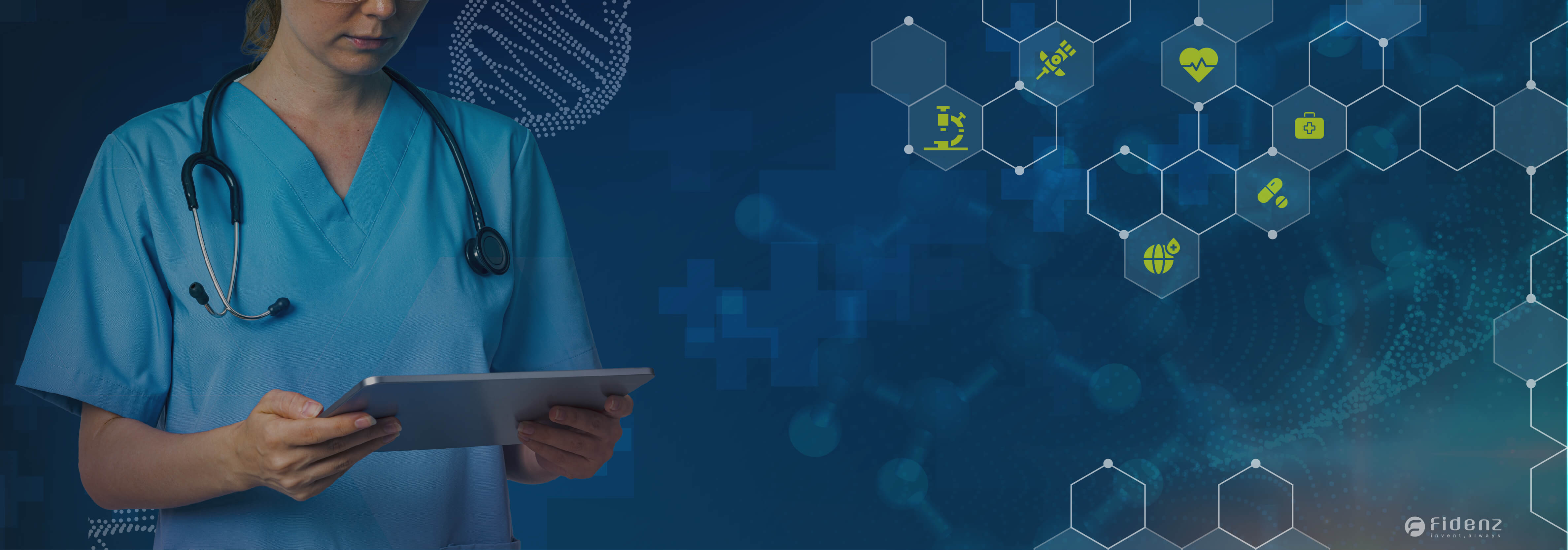
The long hours in queues waiting to get healthcare needs are now over with the revolutionized web and mobile solutions provided in the health industry. The need for online medicare solutions has been gradually increased with the Covid-19 pandemic, where people can safely consult their doctors without getting exposed to the general public.
The increasing number of healthcare applications for devices like smartphones, tablets, and other wearable devices has enabled people to use them and take care of their health in an advanced and effective manner. These applications often include health management, healthy living and wellness, clinical reference, and diagnostic applications.
Significance of eHealth Solutions
According to the World Health Organization, digital health solutions can upscale people worldwide to achieve a higher standard of health and protect well-being. The organization has implemented a three-tier approach to digital health delivery in terms of policymakers, practitioners, and populations.
These seamless and secure technologies can provide effective clinical and public health solutions to the public while accelerating the achievement of the health and well-being related sustainable development growth (SGDs)
Advantages Of Using The Mobile Application In The Healthcare Industry
Seamless Data Flow
Healthcare domains usually consist of complex network web. Apart from the data flow between patients and healthcare personnel, it also needs to be administrated for accounting purposes. Mobile applications can cut off this complex network web allowing the data to move efficiently and faster. It further helps in eliminating extensive paperwork and not to worry about physical document misplacement and damages.
Real-time And Easy Communication Methods
The communication between each party is more streamlined to connect with each other from any place. It helps people in remote areas to get in touch with their doctors without the need for travel. The eHealth modes constitute a significant boom for disabled and older people with chronic conditions who need constant support.
Reduced Risks Of Diagnosis Errors
Numerous types of clinical resources are required to make accurate diagnostic decisions. Mobile health applications can help medical professionals to reference drug guides, medical calculators, clinical guidelines, and other required references. The all-inclusive details in one application can enhance disease diagnosis and treatment decisions with high accuracy.
Encourages A Healthy Lifestyle
Healthcare apps can track and monitor the irregularities in an individual’s health and help them become conscious and motivated to maintain a healthy lifestyle. Digital accessories such as smartwatches, fitness, and health tracking apps enable people to constantly monitor their diet, weight, heart rate, pressure, stress levels, etc., and set goals to achieve fitness and health plans.
The increased leverage in eHealth and mobile application development outlines the need of having custom-made mobile applications catering to your customers. Fidenz technologies has the skills and expertise to make your idea a reality and develop a mobile application that matches your requirements. We also have hands-on experience in developing applications while complying with industry standards like HIPAA (Health Insurance Probability And Accountability Act) and GDPR (General Data Protection Regulation).
Fidenz’s all-inclusive software solutions can benefit every user, such as doctors, patients, medical staff, and other administrators. If you are looking forward to making the right decision in developing a healthcare app that can outsmart the competition, contact our team of engineers for further consultation.
Importance of Human-Computer Interactions
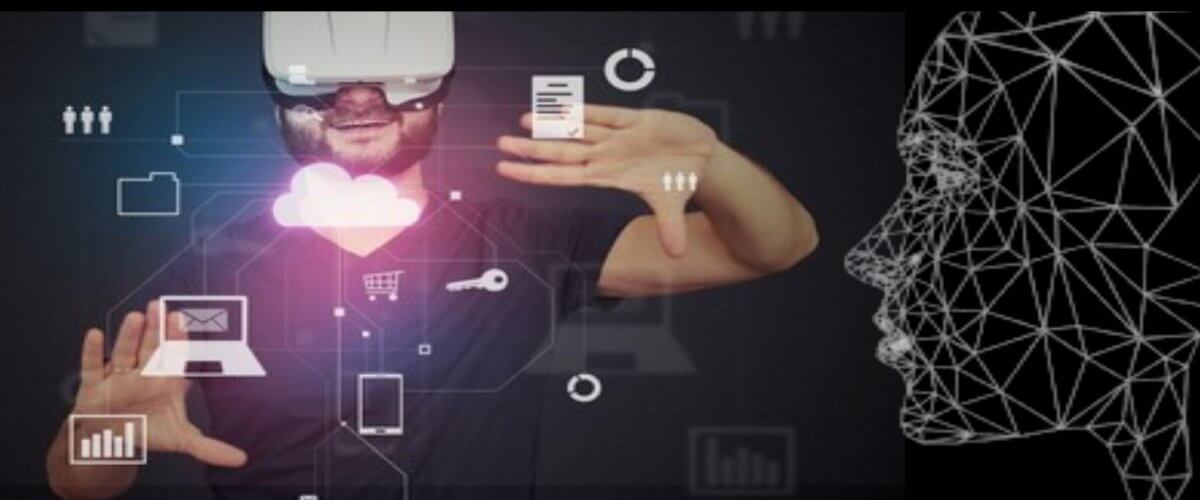
The interaction of humans and computers has rapidly increased over time, where most of the day is spent in front of a computer, and the work needs to be done with technological assistance. Apart from desktop work we further use mobiles, tablets, and other digital devices to do our routine work. The need has highlighted the significance of creating an interface that lets people interact in novel ways and design systems to enhance the everyday work activities for a broad group of people with different skill levels.
What is Human-Computer Interaction (HCI)?
HCI is the science of identifying the interface between people and machines and designing an interface or a computer technology to match those uses. The flow of information between humans and computers can be visual or audio-based. It can also consist of other aspects such as task environment, machine environment, input or output flow, feedback, or a fit to accomplish a task.
HCI can be disciplined in the fields of computer science, behavioral science, design, media, and other areas of studies. It involves identifying the interaction between humans and computers and studying the extent to which computers are developed and designed to have successful interactions.
The multidisciplinary nature of HCI has given it another set of terms, such as human-machine interaction (HMI), computer-human interaction (CHI), and man-machine interaction (MMI). These terminologies have been used in many cases to describe and analyze the uses and goals of HCI in different situations. This further highlights that HCI does not limit to computers, and is inclusive of mobile devices, televisions, vehicles, robotics, surveillance systems, traffic controls, etc.
Main Components of HCI
Poorly designed HCI can cause problems and end up not providing the expected outcome. Hence, it is essential to look into several key factors when developing an HCI system.
Generally, HCI consist of three components, They are;
User – An individual or a group that comes from different conceptions and abilities in learning skills. This further involves cultural and national differences.
Computer – From a desktop to large-scale computer systems, and VCRs to mobile phones can be considered to be equivalent to the term “computer.”
Interaction – With the differences between humans and machines, HCI involves getting a successful interaction with realistic and feasible functions.
Goals And Best Practices
With the ultimate goal of developing usable, safe, and functional systems with conceptual frameworks, developers attempt to implement HCI systems. The theme further involves understanding the factors that put people first and determining how people use technology and develop tools and techniques to deliver efficient, effective, safe systems.
During the development process, researchers may consider existing socio-cultural practices and values or align computer interfaces with a mental model that humans have of their activities. The use of new design methodologies, experimenting with new devices, developing models and theories of interaction, exploring new interaction paradigms, and prototyping new software and hardware systems are some other practices taken into account when developing an HCI system.
Here are some of the best practices that are used during the development of the HCI system.
- Focusing early on tasks and users to determine the appropriate users
- Empirical measurement with quantitative usability
- Creating an iterative design until a sensible, user-friendly interface is created
- Use of multiple resources
- Replacing memory with visual interpretation
- Reducing similar features and highlighting dissimilar ones
These factors enable researchers and developers to create more usable and enhanced HCI systems and develop task-based computer technologies.
A good interface can make the work easy for users and get work done more effectively. Implementing HCI systems that are matched to a specific requirement can upscale the speed and produce more successful, safe, useful, and functional outputs delivering better technological solutions to the future world.
Amazon’s New Pet – Astro
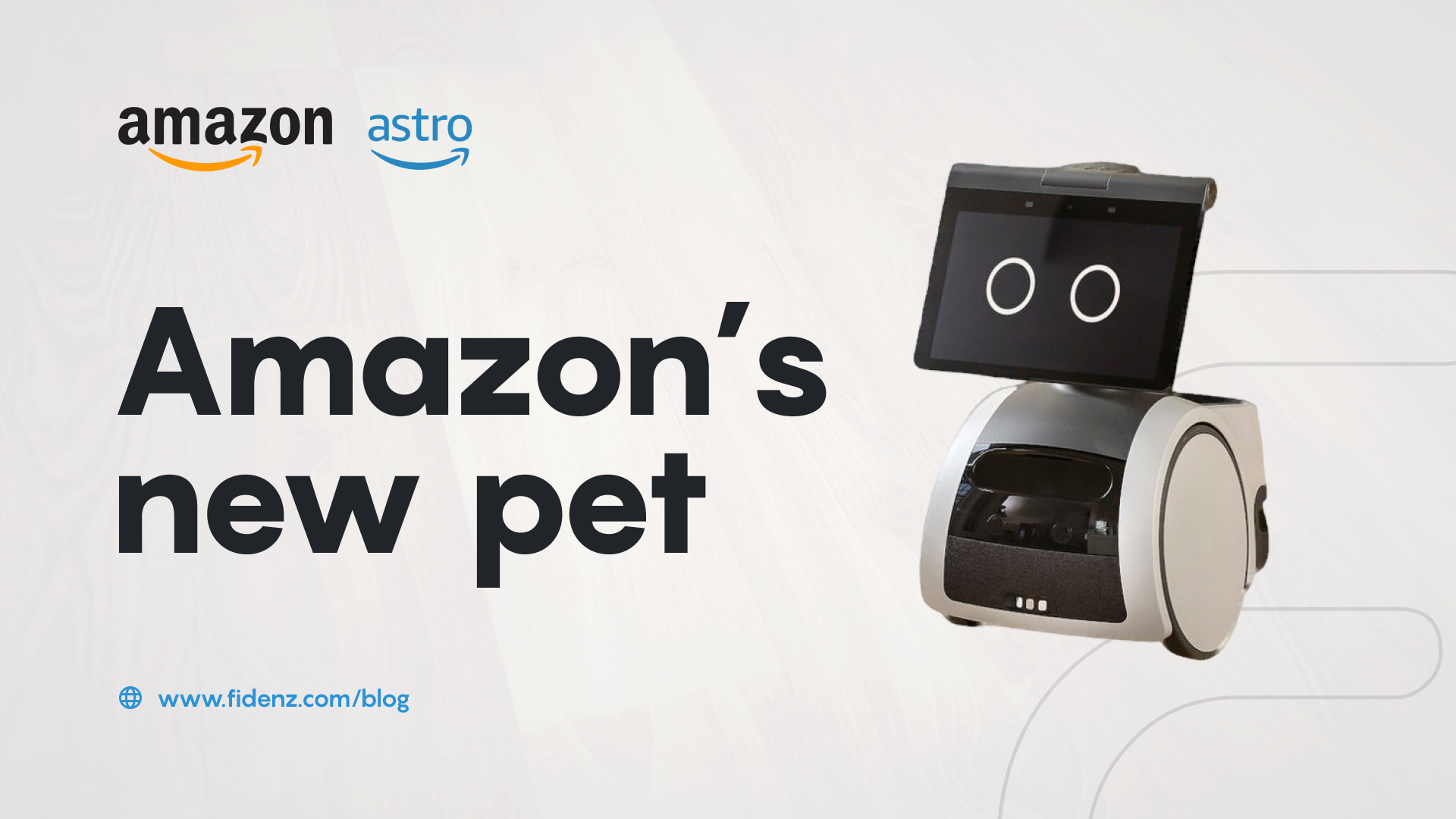
Amazon’s new pet Astro is a part of its Day 1 Editions program, with limited availability. Astro is a $1000 worth invasion-only program with a robust system and numerous use cases. While many of these are related to security, remote care and easy access, the robot also plays a role in entertainment. It carries a little carrying tray, a USB port for extensions, and a periscope that can pop out to see the counters. Astro working with Alexa together is another plus point for all the existing Alexa users to try out a combo and enhance their user experience.
The first-generation tech piece is an impressive feat that has tremendous potential. Given below are the prominent highlighted use cases of Astro that can help to improve the day-to-day life of its users.
- Home Monitoring - Astro can be an autonomous home-security system that can wander around the house. The robot has the ability to patrol a home, detect unidentified people, and send alerts. When you turn on the ‘away mode’, Astro can take care of your premises, ensuring its safety, and send alerts when it hears sounds like glass breaking or similar.
- Reminders & Updates - Astro can check on behalf of you whether the back door is open, whether you have left the stove on, or to check why the dog is barking at midnight without you having to leave your bed.
- Remote Care - For anyone who needs remote care can ask Astri to set and deliver reminders. There is a ‘Drop In’ option to stay connected. Together with Alexa, Astro can make work easy for those who are differently-abled or have mobility challenges.
- Entertainment - “Astro beatbox” or “what’s your favorite animal?” are top items that Amazon suggests as potential use cases that Amazon indicates in terms of fun things that Astro can provide and be closer to users as a pet than a machine.
Anthony Robson, the principal product manager for robotic technologies and consumer robotics at Amazon, insisted on having some level of extensibility. He further states, ‘We’re going to learn so much about every home — and every home is going to be different and have different needs. We have customers working in their home offices on either side of the house, sending things to each other using their Astro. We are learning, we are listening, and we are adapting. We will extend Astro’s capabilities as we learn from customers’.
When it comes to the drawback or the things the team wasn’t able to prioritize for launch, Astro not being able to climb stairs and its speed can be taken as the most significant. However, this is because of the need to keep the product simple and handy from a practical perspective. Also, adding the features such as climbing stairs can make it more complex, thus increasing the costs.
Moreover, the developer toolkit for the Astro robot is on its way and has not been launched yet. Nevertheless, the comms team for Astro is excited about the potential of the robot as a comms and monitoring tool.
The ability to build incredibly capable robotics with cute, expressive faces and high user-friendliness as first-generation tech gives us the hope to experience more refined Astro robots in the future.
The History of Google Messaging Apps

The history of google messaging apps goes beyond 16 years, where most of its competitors did not exist. Google has come up with numerous ideas and applications highlighting different features in each of its apps. Here is a comprehensive list of applications that Google has introduced so far to enhance the chat experience for its users.
Google Talk
Founded Year: 2005
Existence: 12 years
Clients: Windows, Android, The web, Blackberry, iPhone, iGoogle, Gmail, Orkut, XMPP Clients.
Intention
To work similarly to email where different service providers and clients can talk to each other over a single standard called XMPP (extensible messaging and presence protocol). It further enabled cross-communication with other chat services supporting the standard where any XMPP-compatible third party client can talk to Google Talk users.
Highlighting facts
Built on open protocols
It was a part of the second big Wave of popular instant messaging apps like AOL Instant Messenger (AIM), ICQ, Yahoo Messenger, and Windows Live Messenger.
The installer file size was only 1.45MB, whereas other messenger services like Yahoo or Windows consecutively provided 9.5 and 15.3MB.
Here is a series of updates that revolved around the Google Talk launch.
12/2005 – Google bought a 5% stake in AOL to build cross-communication between AIM, ICQ, and Google Talk.
01/2006 – Google came across their first official mobile client, a Blackberry app with a public XMPP network.
02/2006 – Integrated with Gmail on the web and added chat logs
03/2006 – Introduced Avatar support
07/2006 – Introduced file transfers, voicemail, and sharing music.
09/2006 – Opened Google Talk to non-Gmail accounts
11/2006 – Integration with Orkut (a social network)
12/2006 – Announced plans for integration with traditional phone systems that lets you dial a phone number from the computer.
2007 – A client for the ‘iGoogle’ customizable homepage arrived in 2007 and a standalone web client at Google.com/talk.
2008 – Google talk arrived at the iphone as a mobile web app
Google’s first foray into a video chat with Google Talk in Gmail and later the main client.
2010 – Google’s voice and video chat requires a browser plugin and runs on technology from a company called ‘Global IP Solution (GIPS)’ They bought GIPS in 2010.
2011 – Open-sourced GIPs technology and IP starting a WebTRC project. It is a dominant VoIP technology and a W3C standard that allows many web browsers to make voice and video calls without any plugins.
Android added video chat support, and Google Talk became a core feature of their operating system.
Google Talk service ran communication for Android’s push notification system, with real-time XMPP that allows quick authentication and pass messages building and OS-wide notification system around it. The system was eventually opened up to third parties.
The cloud synchronization of Google account data also ran through its services like keeping contacts and calendar events up to date. In addition, it allowed app installation from a desktop web browser using a push request without the need of the phone in hand.
It further included features like remotely uninstalling malicious apps from the phone.
Extermination
With the release of Google Hangouts in 2013, Google Talk started to fade away. Google Talk allowed users to carry contacts and messages to the new service, making hangout an obvious replacement. In 2015, Google Talks windows clients officially stopped accepting logins. In 2017, third party XMPP connections to the Google Talk service stopped working, and the Gmail web integrations transitioned to Hangouts.
Google Voice
Founded Year: 2009
Clients: Web, Android, iOS, webOS, Blackberry
In 2009 Google introduced Google Voice, where users can use a Google phone number instead of a landline phone number or a cell phone number. In addition, the number was provided with an area code where the phone calls could be forwarded, and text messages were accessible via the web and other apps.
Back in 2007, Google acquired GrandCentral communications, where all of Google’s voice phone calls came from. It offered a new phone number with forwarding options and an audio-only voicemail box accessible over the Internet. Unfortunately, the function didn’t include texting.
The launch of Google Voice made them add a ton of features to GrandCentral. These include SMS support, conference calling and low-cost international calling. It also consisted of voicemail transcription where the Google Voice Recognition AI can transcribe voicemail into easily scalable text (Although it wasn’t super accurate).
SMS on the Google Voice number worked similar to that of a texting app where you can check them wherever the app is installed or on the web. However, getting the MMS feature became a long-run thing where it was first introduced to sprint users in 2011 and later given to the rest or all carriers in 2017. In 2014 Google Voice took off all the third-party apps.
Google Voice also used XMPP at one point to connect calls. This led users to connect landline phones to work directly over the Google voice system, making a VoIP provider that turns out to give free voice calls. However, the XMPP support was entirely shut down in 2018.
The launch of Google Fi in 2015 merged the features of Google voice with an MVNO service. However, the app was revamped in 2017 and became a part of G Suite in 2018 and got mobile VoIP calls in 2019.
Google Wave
Founded Year: 2009
Existence: 2 years and 8 months
Clients: The web
Google wave was introduced as an alternative to email. It was created by the same pair of brothers who introduced Google Maps to the world. It consisted of three columns, navigation and a contact column, inbox, and a message view from left to right, respectively, when previewed on desktop.
Similar to that of emails, Google Wave can create threads where users can reply to a single person or an entire group. Users also had the authority to grant or remove access to keep or remove people from the threads.
The Wave was Google’s first product to do real-time letter-to-letter communication with the help of HTML5. This was similar to that of Google Docs, where the wave threads can be seen live with messages and images without refreshing the page. It further consisted of a ‘playback’ feature where the entire process can be replayed from the beginning.
With the installation of Google Gear and Google browser API shim, Google Wave could upload photos with a drag-and-drop feature just like a native app.
In 2010 Google said that the Wave had not seen the user adoption they expected. A significant reason for this was the lack of a network. It was limited to users on Wave, where the external users interested in using it didn’t have the opportunity to join the network immediately due to an ‘inviting system’. As a result, it was opened to the public after May 2010, almost a year when the hype was already gone.
By early 2012 Google Wave was available only with a read-only feature, and it was entirely deleted by April 2012.
YouTube Messages
Founded Year: 2017
Existence: 2 years and 1 month
Clients: iOS, Android, The web
In 2017, Google launched a feature called YouTube Messages. It included a news sharing tab for mobile app users for messaging purposes. This further allowed uses to look into the conversations around a video. For desktop users, a message button was available next to the bell and app buttons. A pop-chat window came up when you wanted to share a video or have a conversation about a particular video with your friends.
The message input box also consisted of a ‘+ Video’ button to easily drop the videos to a conversation. It also had a heart button to react to messages. Users can add their phone contacts or send an ‘invitation link’ to add friends.
The feature lasted for almost 2 years and shut down its operation in 2019. However, a specific reason for this was not given for the closure.
Google Hangouts Chat
Founded Year: 2018
Existence: Till present
Clients: iOS, Android, The web
Together with Hangouts Meet, Hangouts chat was initially announced in 2017. However, the access was limited till 2018 and was only available for organizations paying for the G Suite. It was announced as an enterprise-focused communication tool to enhance communication purposes inside organizations.
From day one, Hangouts chats consisted of impressive features like @mentions, treated messages, DMs, bots, and support for rooms. Every message was threaded, representing a forum-style layout. Reply input boxes were available at the bottom of each thread and a new thread button at the bottom of everything.
Hangout chat supports several chatbots like Google Drive, Asana, Trella, etc. This enables users to stream outside info into the chat room. The service works on iOS, Android and the web, where the desktop is handled by a Progressive Web App (PWA).
The hangouts chat app is still available for users and is even considered a competitor to Slack.
Although this article mentions the most popular chat apps introduced by Google, there are 25+ chat apps altogether introduced by Google over the past few years. Most of these executions have been withdrawn in the middle for many reasons, leaving their users to adapt to different applications every 2-3 years.
If you want to know more about the Google Chat history, check out the original blog post by Ron Amadeo https://arstechnica.com/gadgets/2021/08/a-decade-and-a-half-of-instability-the-history-of-google-messaging-apps/ which gives a comprehensive description of all the Google chat messaging apps from day one.
Alert For Homepod Users: Homepod Bricking with Apple’s Latest Software Update

The new release of iOS 14.6 has been reportedly causing issues to the Homepod users. After being discontinued for several months, the owners of the full-seized homePods have now faced the unpleasant situation with their devices bricking and dysfunctioning.
However, the problem has not affected the mini-HomePods, and no complaints have been received from the mini-HomePod users yet.
Below are the main problems that users have come across and discussed in forums like Reddit after starting to use the devices with the iOS update.
- Sudden dysfunctioning
- When plugged in doesn’t power up
- No response to touch
- Not connecting to a stereo pair or Apple TV
- Unresponsiveness with constant flashing volume buttons
- Overheating
Apple’s Solution
It is not clear to which extent the problem has occurred, and the company has not made any official statement yet on the issue or a solution.
However, Apple has released the third beta version of Homepod software 15 as a part of the AppleSeed program. Subsequently, users running the Homepod software 15-beta have noticed the device getting overheated for no particular reason. Also, this update is available through the AppleSeed program, where only exclusive users are invited.
A senior Apple technician has advised on the Reddit platform to avoid downloading Apple’s recent software updates for the time being, which is not the solution for everyone or those who are already left with a dysfunctioning HomePod.
Warranty Issues
Most of the users who have faced the issues are owners of Homepod devices that have already completed the warranty period. A user with 19 HomePods had seven of them suddenly turn into paperweights. He has further claimed that all of them are out of warranty, and he won’t purchase new ones assuming they will break sooner or later.
One HomePod owner has walked into an Apple retail store with the bricked device for a replacement and has been asked to get it repaired at about 20Euros less than the retail price whereas another has been asked to pay $270 to get a new replacement. The support seems to be ludicrous when the reason for the bricking is the software update from Apple. However, those with active Applecare can replace the product outright.
Apple has yet to acknowledge the issue and come up with a solution that can end the persisting problems faced by the HomePod users. If your HomePod is working fine at the moment, it is best suggested to avoid the software updates until the company comes up with a reliable solution.
Equal Opportunities: One-on-one sign language interpreters for Apple software
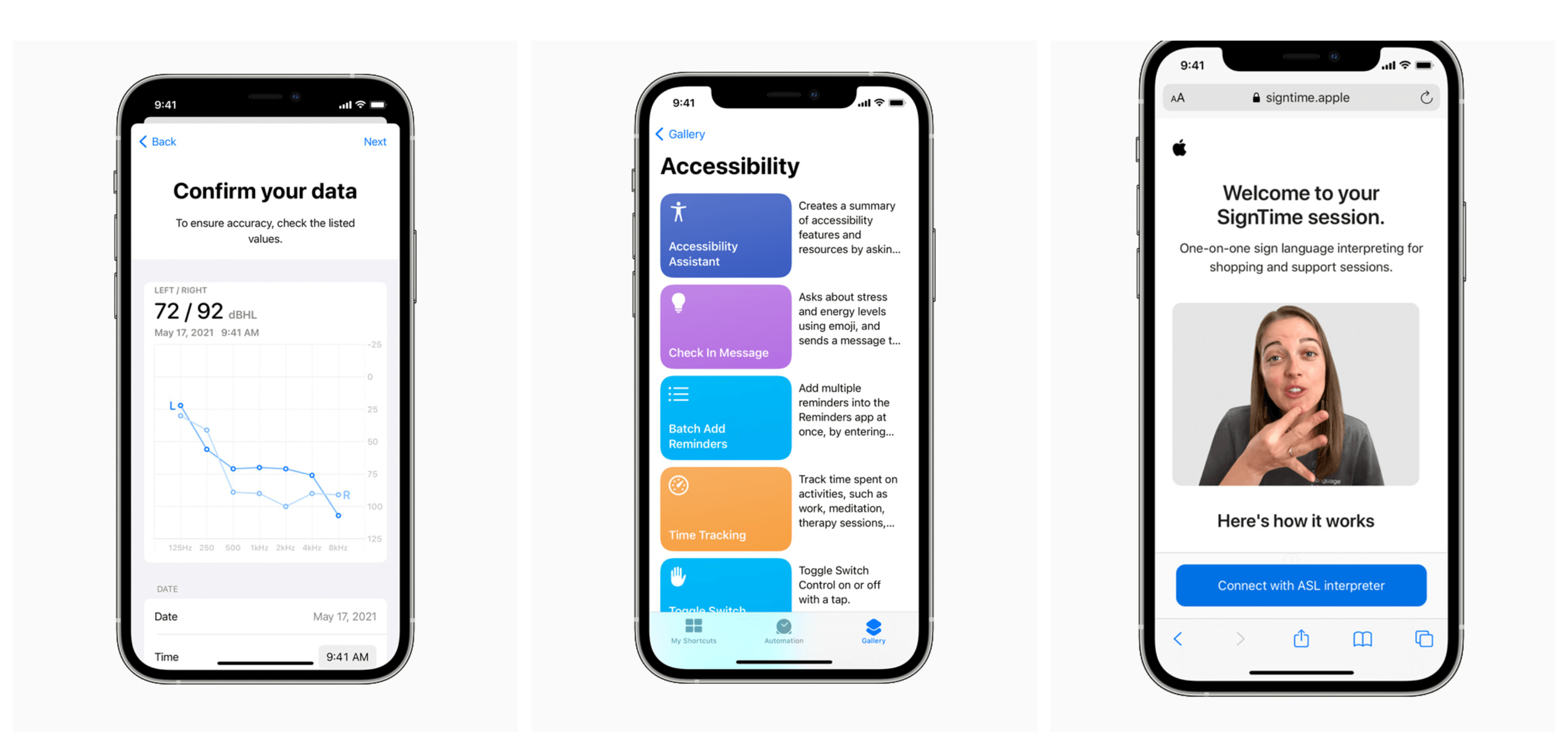
With the aim of delivering “equal benefits” to “everyone,” Apple has announced software dedicated to people with disabilities. The cause has been initiated with Apple’s belief that “Accessibility is a human right.” The company’s history in delivering customizable features for all users is another reason for this next-generation technology solution.
The software features robust designs, including sign language interpreters, and the company has announced the updates will take over all of Apple’s operating system later this year. The expected added features include;
- Assistive touch for apple watch
- Third-party-eye-tracking software
- VoiceOver screen reader with on-device intelligence
- Bi-directional hearing aid called Made for iPhone (MFi)
Assistive Touch – For Apple Watch Users
This is the latest feature for the apple watch to support users with limited mobility. The revolutionary Assistive Touch allows individuals with upper body limb differences without needing to touch the controls. With the use of built-in motion sensors, the watch can detect differences in muscle movement and tendon activity.
Gyroscope, accelerometer, optical heart rate sensor, on-device machine learning are used in developing this latest feature while enabling the users to navigate through hand gestures such as pinch or clench. It further helps Apple users with mobility difficulties to access and use the features easily. These include incoming call answering, motion pointer control, accessing notification and control centre, etc.
Eye-Tracking Support For iPad
This feature allows users to control the iPad using their eyes. The iPad’s OS will support third-party eye-tracking devices, and later a compatible MFi will be used. The device can track them and control the pointer according to where the person is looking on the screen. Following the person’s gaze, actions will be followed by the device accordingly.
New VoiceOver features
New features have been introduced to the VoiceOver, a leading screen reader for low vision and blind communities. The recent updates allow users to explore in detail. This includes the people, table data, text, and other objects with images. Navigation is accessible in a table like a receipt which contains rows and columns with headers. It further helps in relieving memories in detail and add own image descriptions with personalization.
Bi-Directional Hearing Aids
These bi-directional hearing aids consist of microphones that enable people with hearing difficulties to have hands-free conversations. Later this year, it is expected to have these next-generation MFi models. For headphone accommodations, Apple is also bringing up audiogram charts that can give a hearing test result. The results from these tests can be imported as a paper or PDF and can be used to customize the audio setting accordingly. These further enable it to adjust frequencies and amplify sounds to match with the user’s hearing capacity.
Background Sound Solutions
To support neurodiversity, Apple is introducing new background sounds for its users. This helps to minimize the distraction and discomfort from everyday sounds and stay calm and relaxed. From bright or dark noise to natural music such as rain, ocean, the sounds are available and can be mixed into other audio systems.
Future Trends And Features
Given below are a few additional features that Apple is expecting to have at the end of 2021.
- Sound Actions for switch control
- Customized options for display and text size settings
- New Memoji customization
Furthermore, Apple has developed the following collection for differently-abled people to get the most from their Apple devices.
Apple Fitness+ – From the “time to walk” caption, apple has transferred to the “time to walk or push” title for wheelchair workouts. It also includes a trainer who demonstrates modifications for each activity, making it a reality for every user level.
Accessibility Gallery Shortcuts – A useful Siri shortcut to support daily routines and track of daily medication. It helps users to discover the in-built features and resources and personalize them accordingly.
Today At Apple – Virtual sessions in ASL and BSL to teach the fundamentals of apple devices for disabled people.
App Store Stories – Read stories about a blind TikTok influencer, Lucy Edwards, where she discusses her favourite apps.
Apple TV app – The feature consists of a celebration representing authentic disability onscreen and behind the camera.
Apple Books – Reading recommendations from Judith Herumann, an author and disability rights activist.
Apple Maps – New guides to help users to connect with businesses and organizations that embrace, prioritize, and value deaf community and sign languages.
Introducing the Macintosh in 1984 and revolutionizing personal technology, Apple strives to lead the world in innovation and provide a seamless experience to its users.
